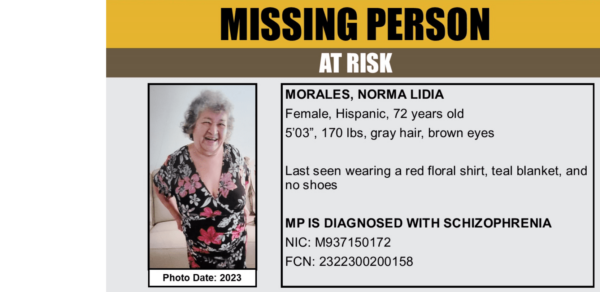This story was originally published by ProPublica in it’s Series: The Right to Read, Examining the Toll of America’s Literacy Crisis.
In Amite County, Mississippi, where a third of adults struggle to read, evidence of America’s silent literacy crisis is everywhere.
It’s in a storefront on Main Street, in the fading mill town of Gloster, where 80-year-old Lillie Jackson helps people read their mail. “They can’t comprehend their bills,” she said. “So many of them are ashamed that they haven’t finished grade school.” She longs for the day she can retire, but she doesn’t want to abandon her neighbors. “That’s the only reason I really stay open,” she said.
It’s in the Greentree Lumber mill, where dozens of residents cut Southern yellow pine into boards, but supervisors — who must be able to page through machine guides and safety manuals — are recruited from other counties. “We’re going to have demand for jobs with no people to supply them,” mill accountant Pam Whittington said.
And it’s in the local high school, in a district where a fifth of students drop out, one of the highest rates in the state. Principal Warren Eyster has seen low literacy trickle from one generation to the next — an unusually American phenomenon.
In other wealthy countries, adults with limited education who were born into families with little history of schooling are twice as likely to surpass their parents’ literacy skills. Here, one’s destiny is uniquely entrenched. Though nationwide graduation rates have risen in recent decades, the number of adults who struggle to read remains stubbornly high: 48 million, or 23%.
If there were local programs that could teach adults the reading skills they never got, those parents could help educate their kids and get better jobs, Eyster said. The entire county would benefit: “Our tax base would go up,” he said. But in Amite County, no such program exists.
In a nation whose education system is among the most unequal in the industrialized world, where race and geography play an outsize role in determining one’s path to success, many Americans are being failed twice: first, by public schools that lack qualified teachers, resources for students with disabilities and adequate reading instruction; and next, by the backup system intended to catch those failed by the first.
Nearly 60 years ago, the federal government established funding to provide free education for adults who could not read to help them improve their literacy and obtain employment. Presidents John F. Kennedy and Lyndon B. Johnson recognized how low literacy intertwined with poverty and all the ills that came with it. The adult education system they built was supposed to give people everywhere a second chance at success.
But, ProPublica found, access to this instruction is limited, increasingly insufficient and — much like the nation’s school systems — highly dependent on geography and the political will of elected officials.
The federal government provided roughly $675 million to states for adult education last year, an amount that’s been relatively unchanged for more than two decades when adjusted for inflation. It’s not enough, and states that oversee these programs are required to commit their own share of funding. A review of adult education spending found glaring disparities among states, with some investing more than four times as much as others for each eligible student.
“The magnitude of the need for adult education services has long eclipsed Congressional appropriations,” a U.S. Department of Education spokesperson said in an emailed statement. “Funding levels have not kept pace with the rising cost of service delivery, nor are funding levels commensurate with the millions of people who could benefit from adult education services.”
ProPublica reporters interviewed dozens of students and adult education workers in states that historically have contributed some of the least funding. We found that in some states, programs keep adults on waitlists, unable to meet demand. Some students succeed in these programs, but many drop out within weeks or months, before they are able to make progress. Students often find themselves in overstuffed classes led by uncertified part-time or volunteer teachers.
Resources are scant. An adult education manager at Copiah-Lincoln Community College in Mississippi said she can’t afford enough practice exams. The supervisor of Nevada’s programs, unable to hire enough teachers, worries about having to put students on waitlists. And most programs across the country lack the specialized staff to help adults with learning disabilities that public schools failed to have diagnosed.
In fact, the entire system is set up to prioritize students who can quickly graduate with a high school or work credential, often leaving behind those who need more time to overcome greater reading gaps. Programs that offer more personalized assistance frequently say they can only do so with private support.
Vast swaths of some states are literacy deserts, lacking any government-run adult education classes. This is the case for about a fifth of Mississippi counties, where hundreds of thousands of people live. Students are forced to cross county lines to attend classes or forgo them altogether. “In an ideal world, each county would have a physical location where adult education classes are offered,” said Kell Smith, the interim executive director of the state’s Community College Board, which oversees adult education. “However, due to financial constraints, this is not possible.” (Read the full response here.) Gov. Tate Reeves did not respond to a request for comment.
Many counties that lack programs also double as hot spots of low adult literacy. These are primarily in the mountains of Appalachia, the Southern Black Belt, the Central Valley of California and along the Texas border with Mexico, but they exist throughout the nation. In about 500 American counties, nearly a third of adults struggle to read basic English, according to ProPublica’s analysis of federal literacy data. These adults may have a basic vocabulary and be able to interpret short texts, but their reading comprehension may be limited beyond that.
In communities with lower literacy, personal challenges magnify into collective crises. In Detroit, for example, former police Chief James Craig recalled how, in their coursework, academy recruits from poorly performing schools had the most trouble with reading. It was harder for them to complete the program, he said, which added to the recruitment challenges faced by the police in Detroit and other cities.
Back in Amite County, Cartina Knox, 50, said she’d jump at the chance to learn what she missed after dropping out of school in ninth grade. But the nearest program is 30 miles away, and she can’t afford a car to get there. “They need places like that out here,” she said.
Standing before a sea of glaring television lights in the packed congressional chamber, President Kennedy exposed an invisible epidemic, reflected in the rates of military rejections, welfare enrollment and incidents of crime.
Millions of Americans were “functionally illiterate,” Kennedy told the nation during his 1962 State of the Union address. In the distinctive clip of his Boston accent, he called for a “massive attack to end this adult illiteracy,” marking a shift from decades of limited and sporadic federal action.
“The economic result of this lack of schooling is often chronic unemployment, dependency or delinquency,” he later told lawmakers. “The twin tragedies of illiteracy and dependency are often passed on from generation to generation.”
President Johnson soon delivered on this call to action, launching the nation’s first federal adult education program as part of his War on Poverty. The goal: Educate Americans whose inability to read or write kept them impoverished and out of the workforce.
The federal government covered the vast majority of costs for free, state-run adult literacy classes. The funds were initially limited to basic instruction, excluding high school credential programs. As the effort expanded, the government mandated that states recruit adults with the highest literacy needs and urged programs to help with transportation and child care. Buoyed by federal funds, enrollment that started at 38,000 in 1965 soared to a peak of about 4 million by 1996.
But in more recent years, fundamental shifts in the program’s goals and funding impeded its success.
The adult education system began to morph into what is now effectively a credentialing program largely aimed at pumping out students with high-school equivalency or workforce certificates. The federal government started tracking student gains as a way to measure performance. States can use these indicators to determine local funding levels or even eliminate funding to programs not meeting high enough standards. This shift led programs to prioritize more advanced students, often at the expense of those originally envisioned by Kennedy: adults who lacked basic reading skills and needed more help.
“The purpose of these programs is no longer to provide literacy education. That is not what they do anymore,” said Amy Pickard, an assistant professor of education at Indiana University Bloomington.
All the while, as federal funding stagnated, states were called on to put up more money or risk atrophying their programs. National enrollment has careened down to only 700,000 students last year. Despite the country’s immense need, less than 3% of eligible adults receive services.
By the time Jacqueline Davis sought reading help, the system was no longer built to serve her. The 62-year-old lives in Shelby County, Tennessee — home to Memphis — where more than a quarter of adults struggle to read. Her father, who was traumatized by a racist assault he experienced as a child, kept her out of school. He read history books to her but didn’t provide any formal instruction. As an adult, Davis stumbled over large words and grammar. Her low reading level made chores out of basic tasks. At the doctor’s office, she had to ask for help filling out intake forms, and she later looked up unfamiliar words in the privacy of her home.
For most of her life, Davis worked as a cashier at places like Popeyes and Kmart, which sometimes required applicants to have a high school credential. She usually lied on the forms so they would hire her, she said. To her knowledge, no one found out. She dreamed of running a small produce business, sustaining herself with what she could grow with some dirt and her own hands. But her inability to fill out hiring or grant paperwork stopped her.
More than a decade ago, Davis signed up for free classes with Messick Adult Center in East Memphis — one of the few in the county at the time. The program, like many across the nation, catered to adults who were close to getting a high school credential, not those who lack basic reading skills like she did. Davis tried to follow the lessons but quickly fell behind. “I just didn’t have the foundation,” she said. “My writing skills are not good, my spelling is not good.”
Her daughter, Mecca Stevenson, recalls watching Davis struggle with homework, too proud to ask her children for help. She only found out her mother had dropped out when the center called their home phone to check on her. Years later, Tennessee shut the center down for failing to graduate enough adults with a high school credential. The state has since worked to improve the quality of instruction in adult education, including providing more training to teachers, according to Jay Baker, the assistant commissioner of adult education.
After she dropped out, Davis kept looking for other options, frustrated by her inability to keep up in a group setting but determined to find something that worked. Several years later, she saw a television advertisement encouraging adults to sign up for classes at the library. She enrolled in a program run by the nonprofit Literacy Mid-South, which provides one-on-one tutoring for adults with a sixth-grade reading level or less. It was exactly what she needed.
Over five years, her abilities and confidence have risen, as her tutor encouraged her to take apart long words and sound out each letter. She says the program has changed her life. “I’ve learned how to pronounce words and read words that I’ve never seen,” she said.
The difference: Literacy Mid-South is not part of the government’s adult education system, so it has more flexibility to help students at Davis’ level.
While it’s one of the only programs in Memphis offering free tutoring for adults like Davis, it doesn’t get federal or state funding to do so. Adult program coordinator Lee Chase said he hasn’t applied because his program doesn’t work the way those funded by the government do, pushing students to get their high school credentials as quickly as possible. “Our learners choose their goals and we don’t want to limit what those are,” he said.
The lack of additional funding has hampered the program’s ability to grow. All tutors are volunteers, and only two employees receive salaries. Applicants often face a monthslong waitlist for a tutor.
“We’re just plugging holes in a lifeboat,” Chase said.
The nation’s approach to adult education has so far failed to connect the massive number of people struggling to read with the programs that could help them. ProPublica reporters heard time and again that in communities stricken with low literacy, programs had to close sites because not enough students had enrolled. Meanwhile, more than two dozen adults in these hot spots told us that a lack of transportation or child care or busy work schedules prohibited them from attending classes. As a result, many have fallen through the cracks.
For years, Steven Binion wanted to improve his reading level beyond the eighth grade. He didn’t get the one-on-one help he had needed in Detroit’s notoriously troubled schools. Then, he said, after family fights began to escalate, he left home at age 14. Knowing he would have to support himself, he soon dropped out. He survived for years on low-paying jobs: trimming lawns, sorting packages, working at factories. When he had a baby, his worries escalated as he struggled to afford diapers and shoes for his son’s growing feet and couldn’t rent an apartment for his family. He tried several times to attend education programs, but he couldn’t sacrifice the time spent earning a paycheck.
Meanwhile, Mayor Mike Duggan of Detroit was watching this pattern play out at scale. When he was elected in 2013, the city was bankrupt and nearly 1 in 5 adults were unemployed. Adults struggled to read — so many of them, generation after generation, that the city had grown to epitomize the nation’s literacy crisis. While difficult to measure, low literacy estimates for Detroit and its surrounding county have ranged from more than a quarter to nearly half of all adult residents.
The lack of skilled workers stunted the city’s ability to attract industrial investment. Middle-wage jobs all but disappeared. The city struggled to expand its tax base and maintain its public services. “At the time I got elected, the streetlights weren’t on in the city and the ambulances didn’t show up for an hour,” Duggan told ProPublica. “It was pretty much nonfunctional.”
The mayor realized that to interrupt this cycle, the city needed to better educate its residents. But even with the handful of literacy programs available, not enough adults were attending to make a meaningful difference. Too often, people like Binion couldn’t balance learning with work. While the earlier vision of America’s adult education system prioritized helping students overcome these barriers, many programs today cannot offer this support.
Duggan and other city officials came up with an unprecedented plan, one that accounted for the city’s responsibility in creating the crisis. They launched Skills for Life last year; unlike most municipal job programs, it pays participants to go to school. Two days a week, they can improve their reading abilities, prepare for high school credential exams or develop skills like masonry or electrical wiring. The other three days, the city employs participants either in blight remediation, clearing vacant lots or as park ambassadors, tending the city’s green spaces. They’re paid at least $15 an hour — about $5 more than the state minimum wage — for all five days. The city also provides assistance for participants without transportation or child care.
As many as 2,200 residents are expected to participate in Skills for Life over three years; it has up to $75 million in funding committed through 2024.
“The first responsibility of government is to show folks who dropped out because they thought things were hopeless, who didn’t learn to read because they thought there was no value — to show them there is a real and immediate benefit,” Duggan said.
Relying on a temporary stream of pandemic aid dollars, the city pays local adult education programs to run the classes. Detroit is simultaneously addressing some of the root causes of the literacy crisis: With an additional $1.3 billion in federal relief funding, the school district is on its way to dramatically improving facilities and expanding literacy tutoring for children.
While it’s too early to measure the success of the Skills for Life program, the mayor says he is confident that it will prove an integral part of Detroit’s turnaround.
“By the end of 2024, we’re going to be able to show definitively: Yes, you can fundamentally reduce poverty rates, raise literacy rates, raise income,” said Duggan, who believes this could be a model for other communities. “At least so far, we’re feeling very optimistic.”
After searching online, Binion, now 32, came across Skills for Life. Though incredulous that it would provide him with paid time to learn alongside a city job, he showed up an hour early to the interview, he said, and was hired that day.
Three days a week, he cleared the city’s abandoned lots, and two days a week, he worked with a tutor through the nonprofit St. Vincent and Sarah Fisher Center. The city’s program also set him on a path to earning a certificate in masonry, which will open up dozens of job opportunities. But first, he had to attain his high school credential.
Within months of starting the program, he passed the exam’s science and math sections. But he stumbled on language arts, failing the section twice.
Without the encouragement of his tutors, Binion would have given up. But after several more months of the city paying him to learn, he passed.
by Annie Waldman, Aliyya Swaby and Anna Clark, with additional reporting by Nicole Santa Cruz, photography by Kathleen Flynn, special to ProPublica
ProPublica is a Pulitzer Prize-winning investigative newsroom. Sign up for The Big Story newsletter to receive stories like this one in your inbox.
ProPublica is a Pulitzer Prize-winning investigative newsroom. Sign up for The Big Story newsletter to receive stories like this one in your inbox. Republished with Creative Commons License (CC BY-NC-ND 3.0).







